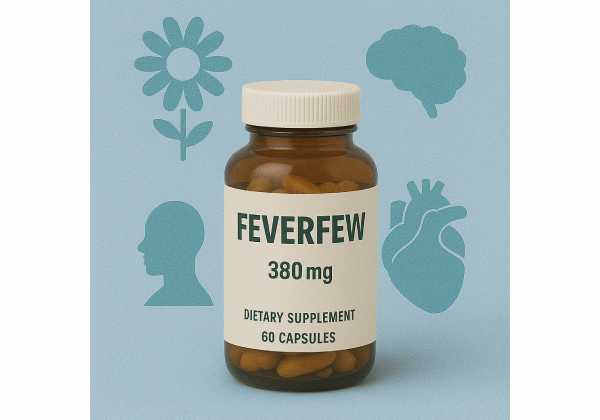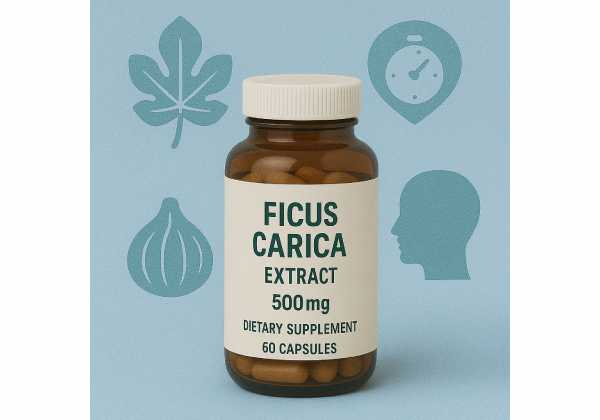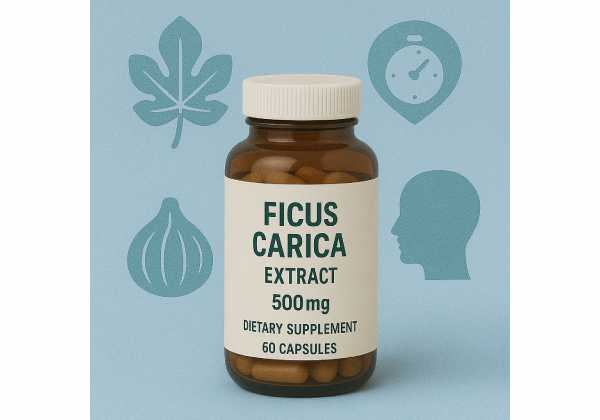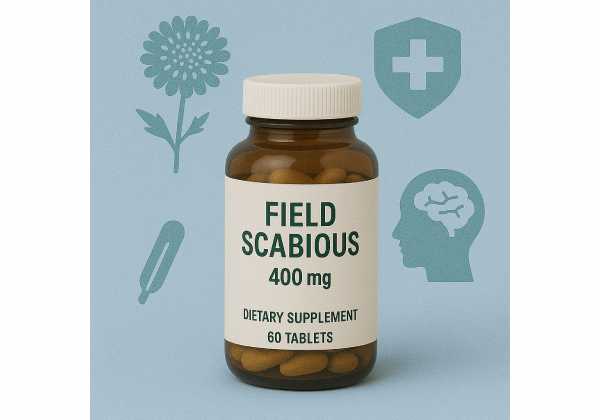Ferrous pyrophosphate: Practical guide to dosing, interactions, and minimizing side effects
Ferrous pyrophosphate is an iron salt marketed for people who need supplemental iron but struggle with the metallic taste or stomach upset of standard ferrous sulfate tablets. It’s related to the better-known “iron pyrophosphate” used to fortify foods and infant formulas; most of those products actually contain ferric pyrophosphate (the ferric, Fe³⁺ form), which is less soluble unless specially...
Ferrous succinate: Benefits, how it works, proper dosage, and side effects
Ferrous succinate is a ferrous (Fe²⁺) iron salt used to prevent and treat iron deficiency and iron deficiency anemia. Like other ferrous salts, it supplies “elemental iron”—the active amount your body absorbs—to rebuild hemoglobin and restore ferritin (your iron reserve). Many people prefer ferrous succinate because it is available in well-tolerated tablets and liquids, often at an accessible price...
Ferrous sulfate: Evidence-based benefits, how to take it, dosage by age, and risks
Ferrous sulfate is one of the most widely used oral iron medicines for treating iron deficiency and iron deficiency anemia. It is inexpensive, easy to find, and, when taken properly, highly effective at restoring hemoglobin and replenishing iron stores. A standard 325 mg ferrous sulfate tablet provides 65 mg of elemental iron—the part your body actually uses. In this...
Ferulic acid: Top Benefits for Skin, How It Works, Best Dosage, and Side Effects
Ferulic acid is a plant-derived antioxidant found in grains, fruits, and vegetables that has become a workhorse in modern skincare. It scavenges free radicals, helps stabilize notoriously fragile vitamin C formulations, and bolsters protection against UV-induced damage when layered under sunscreen. In clinical settings, ferulic acid combined with vitamins C and E has reduced UV erythema, supported post-procedure recovery,...
Feverfew: Proven Benefits for Migraine Prevention, Proper Dosage, How to Use It, and Side Effects
Feverfew (Tanacetum parthenium) is a traditional herb with a modern reputation: people most often consider it to help prevent migraine attacks. Its leaves contain sesquiterpene lactones—especially parthenolide—plus flavonoids and other compounds that may calm inflammatory signaling, modulate platelets, and influence pathways tied to head pain. Evidence is mixed but suggests some individuals experience fewer migraines with standardized extracts, particularly...
Ficin: Evidence-Based Benefits, How It Works, Practical Uses, Dosage Guidance, and Side Effects
Ficin is a proteolytic enzyme from fig tree latex (most commonly Ficus carica). It belongs to the papain-like cysteine protease family—the same class as papain (papaya) and bromelain (pineapple)—and it breaks large proteins into smaller peptides and amino acids. That simple action underlies ficin’s many roles: it is studied and used as a food biocatalyst (cheese coagulation, meat tenderizing,...
Ficus carica extract: Benefits for Skin and Digestion, How to Use, Dosage Guidelines, and Side Effects
Fig (Ficus carica) has been valued for centuries as food and folk remedy. Today, interest has shifted from the fruit alone to concentrated extracts from the leaves, fruit, and latex, which contain flavonoids (like rutin), coumarins (such as psoralen and umbelliferone), and other bioactives. Early human trials suggest potential benefits for skin health and digestive regularity, while animal and...
Field Scabious: Benefits for Skin Health, How to Use It, Proper Dosage Guidance, and Safety
Field scabious (Knautia arvensis) is a wildflower of hedgerows and chalky meadows with a long history in European folk medicine, especially for minor skin complaints. Today, interest centers on its polyphenols—flavonoids and phenolic acids—that show antioxidant and antimicrobial activity in laboratory studies. While human trials are lacking, early evidence from related Knautia species points to potential topical utility in...
Fig leaf extract: Skin and metabolic benefits, tea dosing, and safety explained
Fig leaf extract—made from the leaves of the common fig tree (Ficus carica L.)—has moved from kitchen folklore to the supplement aisle. The leaves are naturally rich in phenolic compounds (flavonoids such as rutin and coumarins such as umbelliferone) that show antioxidant and anti-inflammatory activity in the lab. In humans, an 8-week randomized trial found that drinking fig leaf...
Filipendula ulmaria extract: Natural support for cold and minor pain—how to use, dose, and stay safe
Filipendula ulmaria—better known as meadowsweet—is a traditional European herb valued for its gentle, aromatic flowers and a unique mix of phenolic compounds (notably salicylates, flavonols like quercetin glycosides, and tannins). Modern analyses confirm robust antioxidant capacity and plausible anti-inflammatory mechanisms, particularly when the extract is standardized and formulated well. In practice, people use meadowsweet for short-term relief of common...
Fir bark extract: Science-based benefits, how to use it, dosage guidelines, and side effects
Fir bark extract—most often derived from the European silver fir (Abies alba)—is a concentrated source of polyphenols such as procyanidins, catechins, phenolic acids, and lignans. These compounds give the extract strong antioxidant capacity in the lab and have driven interest in skin health, circulation, and general wellness applications. Early human data are limited: a small randomized trial tested a...
Fir needle oil: Benefits for breathing comfort, how to use, safe dilutions, and side effects
Fir needle oil is an evergreen essential oil distilled from the needles and twigs of fir trees (most often Abies alba, Abies balsamea, or Abies sibirica). People reach for it because it smells like a walk in clean winter air—and because its dominant terpenes (such as bornyl acetate, α-pinene, limonene, and camphene) are being studied for antimicrobial, antioxidant, and...
Fireweed extract : Benefits, Properties, Uses, Dosage, and Side Effects Explained
Fireweed (Chamerion angustifolium, formerly Epilobium angustifolium) is a northern wildflower with a long record in folk medicine and a growing profile in modern research. Its leaves and aerial parts are rich in ellagitannins (notably oenothein B) and flavonoids that show anti-inflammatory, antioxidant, and antimicrobial activity in lab studies. A small but notable randomized trial in adults with benign prostatic...
Fisetin: Proven Benefits, How It Works, Research Doses, and Safety Risks
Fisetin is a plant-derived flavonol best known for its role in “senolytic” research—the effort to clear worn-out, inflammatory cells that accumulate with age. Naturally present in strawberries, apples, persimmons, onions, and cucumbers, fisetin has antioxidant and anti-inflammatory properties and is being studied for healthy aging, metabolic, cardiovascular, and brain health applications. Early laboratory and animal studies are encouraging, and...
Fish collagen: Skin hydration and elasticity gains, daily dose guide, and safety
Fish collagen has become one of the most popular “beauty from within” supplements, and for good reason. Derived mostly from fish skin and scales, it contains hydrolyzed collagen peptides—short chains of amino acids that your body can absorb and use to support the skin’s extracellular matrix. People take it to improve skin hydration and elasticity, to ease everyday joint...
Fish liver oil: Benefits for Nutrient Gaps, How Much Per Day, and Who Should Avoid It
Fish liver oil—best known as cod liver oil—is a traditional supplement with a modern twist. Unlike standard “fish oil” from the flesh, fish liver oil naturally delivers omega-3 fatty acids and the fat-soluble vitamins A and D. That mix can be an advantage (for bone, vision, and immune support) or a liability (risk of vitamin A excess), depending on...




















